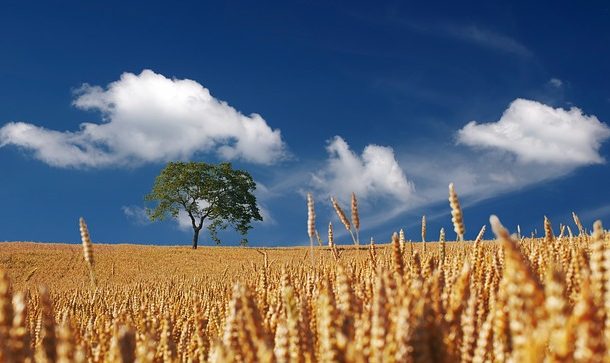Science crucial to agricultural innovation

The Australian Bureau of Statistics (ABS) reports that the gross value of Australian agriculture increased by $3.1 billion to $56 billion in 2015-2016. Science is present throughout the production of our food and fibre. From the plant breeders responsible for new crop varieties to soil scientists, agronomists, veterinarians, engineers and hydrologists developing new practices. Food technologists who are researching new products and social scientists helping farmers and communities adapt to change-the list goes on.
Australian farmers are regarded as some of the most efficient, adaptable and innovative in the world and scientific research is at the heart of that. For example, research by the Australian Bureau of Agricultural and Resource Economics and Sciences (ABARES) has shown that despite difficult seasonal conditions wheat yields have improved significantly in the last decade. ABARES has reported that climate adjusted wheat yields increased from 1.8 tonnes per hectare in 2005-2006 to 2.2 tonnes per hectare in 2014-2015 saying that technological progress is offsetting the impact of deteriorating seasonal conditions.
The Australian agricultural sector is facing some challenges though, among them climate variability, increased input costs and competition in global markets. There are broader issues too, it’s estimated that the global population will double by 2100 requiring a 70 per cent increase in food production. Australia has a big role to play in producing food but also in sharing our knowledge and expertise to help less developed countries build their agricultural capacity.
Innovation that’s driven by sound science and built upon producer and industry engagement is the key to meeting those local and global challenges. As Acting Director of the Graham Centre for Agricultural Innovation I see this every day in our research to improve the productivity, profitability and sustainability of our grain and red meat industries. It’s there in the development of weed management and conservation farming practices to meet the challenge of herbicide resistance and to increase the productivity of our grain growing enterprises. Graham Centre scientists are working to improve grain storage and processing, and to develop functional foods with benefits for human health. Our research is also underpinning new ways of managing pastures to make livestock enterprises more profitable while other projects aim to improve animal health and welfare.
The Graham Centre is a research alliance between Charles Sturt University (CSU) and the NSW Department of Primary Industries (DPI) and we’re focused on delivering meaningful research outcomes for primary industries in our regional footprint. The Graham Centre has more than 40 higher degree research students who are passionate about science and agriculture. These students are the scientific leaders of the future and their work is crucial to increasing the capacity of our rural industries to innovate.
So as you sit down to a meal this National Science Week consider how science has contributed to making that product and how research, development and innovation can deliver further benefits to our agricultural producers, consumers and our community.
Dr Marta Hernandez-Jover is Acting Director of the Graham Centre for Agricultural Innovation, a research alliance between Charles Sturt University (CSU) and the NSW Department of Primary Industries (DPI). She is a senior lecturer in Veterinary Epidemiology and Public Health at the School of Animal and Veterinary Sciences. Her main interests and current research focus on biosecurity risks and risk analysis methods applied to infectious animal diseases and public health. Dr Hernandez-Jover has published over 25 research articles in peer-reviewed scientific journals.











Alan Douglas
August 27, 2017 at 10:42 am
It is without doubt that we owe a tremendous debt of gratitude to science with regard to the growing of seed crops as well as vegetables, etc. I would like to refer to an article in the New Scientist of a few years ago which discussed an agriculturalist in Africa to spent time observing the migration habits of various herbivores and their effects on their environment. When he returned to Australia he observed that the grass beside country roads was often green whereas that within fenced paddocks was brown and dried. HE decided to buy a farm and re-fence it so that he could move his cattle around more easily and therefore more often. The result was that after a couple of years he was able to agist more cattle that the surrounding farmers and have better looking pasture. His neighbours at first refused to accept his ideas but he had proved a point – look to the natural habitat for ideas as well as science.